 |
  |
 |
  |
Living a dream and dreaming a life; Remembering Guru Gangadhar Pradhan - Kedar Mishra, Bhubaneswar e-mail: kedarsikha@gmail.com Photos courtesy: Orissa Dance Academy October 8, 2012 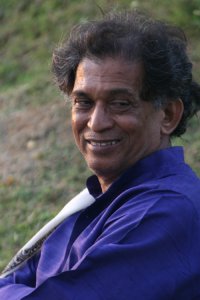 365 days and 365 festivals, my state should be celebrating its rich cultural heritage through a never ending circle of festivals- that is my vision, that only is my dream. Before he stopped speaking I looked at him. His eyes are fixed on the distant horizon, as if he is extending his dream to those unknown zones of difficult possibilities. His dreamy look assured me that nothing is impossible. Today that dreamer is no more, but his dreams speak more eloquently. Guru Gangadhar Pradhan (10th July 1948 -10th October 2010), the epitome of optimism and a moving metaphor for dream, died two years ago. Nobody was ready to believe that the lively dreamer died of a fatal heart stroke. His iron willed persona and humble appearance can be seen nowhere in the mortal world. His existence becomes a leaf of memory. But the dreamer that he was can never die. His dream to create a global platform for Odissi in the very soil of Odisha is still alive in many a form. As a performer, guru, percussionist, composer, organizer and visualiser, he played versatile roles and justifies those entire responsibilities to an enviable perfection. He lived a very short life but created a very long chapter of history. To catch the moon Born into a farmer's family, Gangadhar Pradhan was destined to be a dancer. His birth place Parikula is a little village closer to Dimirisena, another village of great historic importance and a significant center of temple dancing. Nilakantheswar temple of Dimirisena was famous for nurturing Gotipua dancing for many centuries. Here, village folks dedicate their little boys to be Gotipuas and to serve Lord Shiva as divine entertainers. People who believe that Odissi is basically an exclusive Vaishnavite art form must take note of this Shaivaite tradition and evaluate Odissi as a dance form which includes multiple streams of socio cultural medium of expressions. The parents of little Gangadhar dedicated their sick child to Lord Shiva on a banana leaf and from then on the little boy became a dancer. He started learning the tricks and techniques of dancing as a Gotipua from Chandrasekhar Pattnaik and Birabara Sahu. "From a clumsy compound of Nilakantheswar temple I nurtured a new dream to catch the moon in the sky" - that was the dreamy reminiscence of Gangadhar Pradhan. I vividly remember my interview with him. He talked about his life and art explicitly in great detail. He was never encouraged by his father to become a dancer. After ritualistic dancing as a Gotipua the boy should come back to farming; that was his father's wish. Contradicting his father's dream, Gangadhar wished to catch the moon in the sky and aspired to be an Odissi dancer. That was the era of a new beginning. Odissi, as a new classical Indian dance, was getting global attention. The grand troika of Odissi - Pankaj Charan Das, Kelucharan Mohapatra and Debaprasad Das - had been drawing a solid road map to recreate history. Young and determined Gangadhar joined the masters as their devout pupil. Shattering his father's dream, Gangadhar set his journey to become an Odissi dancer having a purse of Rs.27 only. In Bhubaneswar, he was guided by eminent Odissi scholar Dhirendra Nath Patnaik and got admission in Utkal Sangeet Mahavidyalaya. Under great Gurus Pankaj Charan Das and Debaprasad Das's watchful eye the talented young boy started learning the techniques, style and grammar. What he had learnt as a Gotipua dancer got a grammatical base line here and he was fortunate enough to learn Odissi from all three major gurus of Odissi and also blessed to get guidance from doyens like Sanjukta Panigrahi and Minati Mishra. He joined Sanjukta Panigrahi as a co-dancer and percussionist after his initial training. 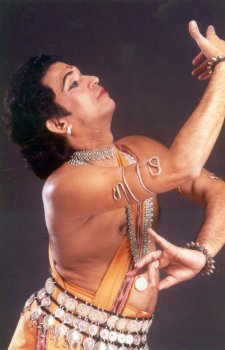
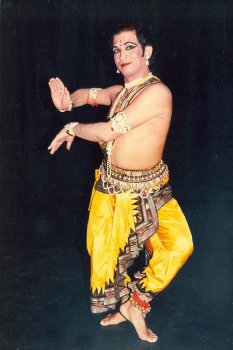
Man with a mission His career as a dancer and dance teacher was not an ordinary one. He was the leader and path finder of second generation Odissi. As a student he learnt the art forms from his elders, but as a creator he started weaving his own dream. To set a stylistic rupture from the very established streams of the great masters was not an easy task. He took the challenge and started composing on his own. His masterpiece Konark Kanti, Shiva Panchaka, many Ashtapadis from Geeta Govinda, Nava Rasa, Ashtanayika... the list is quite long and refreshingly original. He imbibed styles of three major gurus and created his own style of expression. Emphasizing more on the finer elements of body he restructured the movements, stepping and style of expressions. He was a wonderful communicator and explicit chronicler of textual details in group formation. People know him as a brilliant choreographer, teacher and great organizer. Personally, I have seen him performing on and off the stage many a time. The memory of his mesmerizing performance as a Gotipua, at the age of 55, is still fresh in my mind. That was an exclusive lucky show for me and few of my friends. Prior to his untimely death, Guruji was involved with a grand ambitious project to document all kinds of folk dance forms of Odisha. He invited all senior Gotipua gurus to participate in a documentation camp and luckily I got an invitation from him to watch the camp. One by one, seniors like Birabar Sahu, Maguni Das, Gobinda Pala and many others spoke and demonstrated the raw style and techniques of Gotipuas. Finally came a frail looking, darker old man. He was introduced to us as Guru Bhagirathi Mohapatra, a contemporary of Gangadhar Pradhan. Sakhi mu laje mali...mana karuthila kimpa mu yamuna ku gali lo... that was the song. Describing the blissful embarrassment of a Gopika at the bathing ghat and her erotic expressions for Krishna were enacted in a typical desi manner and the body kinetic of the man was superb. After Bhagirathi Mohapatra's performance, I requested Ganga sir to perform the same abhinaya and to show us the transformation process from desi to margi. And Guruji transformed into a young, love sick Gopika and what a performance that was!! After Guru Kelucharan Mohapatra, it was Guru Gangadhar Pradhan who was the undoubted leader of second generation Odissi. His institutional odyssey, Orissa Dance Academy, produced largest numbers of teachers, composers and organizers. The most sought after gurus and choreographers of our time were mostly nurtured by Guruji. Starting from Aruna Mohanty, Nandita Patnaik, Bichitrananda Swain, Meera Das to Yudhisthir Nayak, Lingaraj Pradhan… the list is pretty long. Democratic functioning of ODA opened up space for new generation gurus. He created pupils, trained and nurtured them. Sometimes he had serious problems with them, but he gave the best to the world of Odissi and for that his role as leader is unchallenged and unique. 
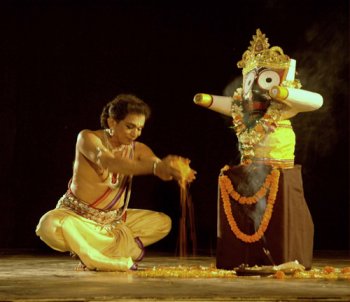
Dreaming a life "Deep into that darkness peering, long I stood there, wondering, fearing, doubting, dreaming dreams no mortal ever dared to dream before," said Edgar Allan Poe. 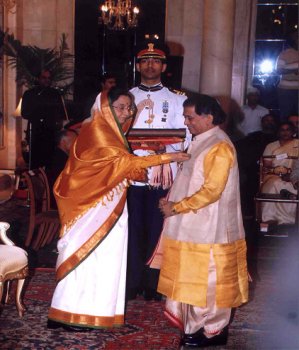 Gangadhar Pradhan's daring effort to dream in darkness is a leaf of that history which documents the uncommon deeds of a common man. A village boy's dream to recreate Konark and enliven the frozen beauties of age old stone carvings got fresh breath of life in shape of Konark Natya Mandap, the open air auditorium near Konark. An unbelievable dream shaped into reality and a man's dream stands erect and immortal with that great structure. He nurtured a great band of pupils, founded numerous art institutions, not only in India but all over the world, organized series of festivals, composed a number of ever refreshing choreographies. He was a Padma Shri, Sangeet Natak Akademi awardee, former president of Odisha Sangeet Natak Akademi and so on, but for me, setting aside all his towering achievements, his one identity that moves me forever, is that here was a dreamer whose dreams can never die. Nothing can eliminate the dream of a god of life and he was none other than Guru Gangadhar Pradhan. Kedar Mishra is a poet and journalist in Odia language. 5 poetry collections, 2 prose collections, 2 books in English have been published. A regular columnist, he writes on classical dance, music and painting. He worked as a research associate in Orissa Research Project financed by Heidelberg University, Germany, on Mahima Dharma from 2000 to 2005. He is presently editor of Sachitra Vijaya, a well known monthly Odia magazine. Post your comments Please provide your name and email id along with your comment. All appropriate comments posted with name and email id in the blog will also be featured in the site. |